How to Plan a European Christmas Markets Trip + Prettiest Markets
Christmas markets in Europe are a bucket-list experience, offering a magical blend of festive cheer, twinkling lights, delicious local delicacies, and handcrafted goods. Planning the perfect European Christmas market trip takes some thought, especially given the number of beautiful markets across the continent. Whether you’re drawn to the fairy-tale charm of Colmar, the imperial elegance of Vienna, or the Scandinavian magic of Gothenburg, each market offers a unique and unforgettable experience. Enjoy the festive atmosphere, indulge in local delicacies, and bring home memories that will last a lifetime. This guide will help you navigate the logistics, give insights into 15 of the prettiest markets, and provide packing tips to ensure your trip is as smooth and memorable as possible.
How to Plan the Best European Christmas Market Trip
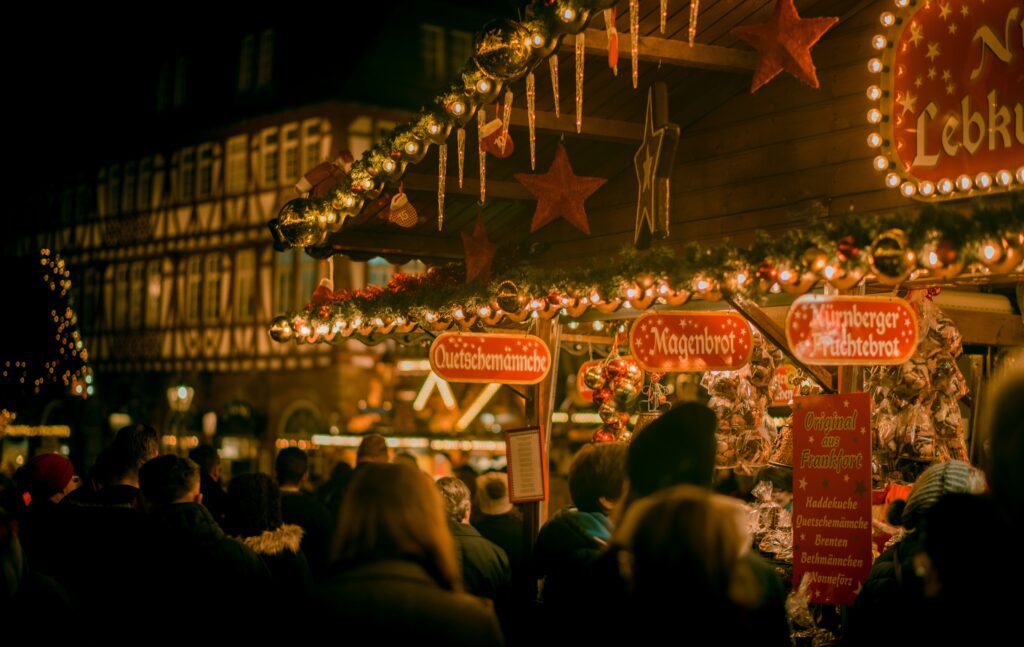
Photo by cmophoto.net on Unsplash
Planning a trip to Europe’s Christmas markets can be a magical experience, but it requires a bit of preparation to make the most of your time. Here are some key tips to ensure your holiday adventure goes smoothly:
Prioritize Your Destinations
Europe is home to hundreds of Christmas markets, but it’s impossible to visit them all. Pick a few key markets that are geographically close to each other to avoid wasting too much time on travel. You can look for some Christmas travel inspiration here. For example, you could combine markets in Austria and Germany, or plan a trip around the markets in France and Switzerland. This way, you can immerse yourself in the experience without rushing from place to place.
Consider Timing
Most Christmas markets start in late November and run until Christmas Eve, with a few extending into early January. If you want to avoid the largest crowds, visit the markets during the week rather than on weekends. Early December is also a quieter time to visit before the Christmas rush. Keep in mind that many markets close on Christmas Day, so plan your trip accordingly.
Book Early
Christmas is one of the busiest times for travel in Europe, and accommodation near popular markets can be completely booked months in advance. To ensure you get the best deals and locations, book your hotels and flights well ahead of time. Consider staying close to the market squares so you can easily walk to the festivities, especially if you plan to indulge in mulled wine and local delicacies.
Work with a Boutique Travel Agency
To ensure every aspect of your trip is well-planned and runs smoothly, consider working with a boutique travel agency that specializes in bespoke European holidays like Original Travel. A knowledgeable travel agent can help you select the best markets to visit, arrange seamless travel connections, and secure exclusive access to experiences, ensuring your holiday is stress-free and full of memorable moments for you and your family.
Use Public Transportation
Most European cities have excellent public transportation, and many Christmas markets are located in pedestrian zones or city centres where cars aren’t allowed. Use trams, buses, or trains to get around rather than renting a car. For longer distances, Europe’s train network is a fantastic option, with services like Eurail making it easy to hop between countries without the hassle of airports or long security lines.
Plan for All Weather
Winter weather in Europe can be unpredictable, ranging from mild and rainy to cold and snowy. Check the weather forecast for each destination and pack accordingly. You’ll likely be spending a lot of time outdoors, so make sure to bring warm layers and waterproof gear.
Immerse Yourself in Local Traditions
Each Christmas market reflects the local culture and traditions of its region, so be sure to try the local specialities and crafts. For example, in Strasbourg, don’t miss the Alsatian "Bredele" cookies, while in Prague, be sure to sample "Trdelník." Taking part in local traditions, like the Christmas concerts in Vienna or Santa’s sleigh ride in Hamburg, will enhance your experience and give you a deeper appreciation for the festive atmosphere.
Combine Markets with Sightseeing
Many of Europe’s top Christmas markets are located in cities that are rich in history and culture, so take time to explore beyond the market stalls. In Vienna, visit the opulent Schönbrunn Palace; in Prague, take a tour of the iconic Charles Bridge and Prague Castle; and in Salzburg, explore the birthplace of Mozart. Combining your Christmas market visit with sightseeing will make your trip even more rewarding.
The Prettiest Christmas Markets in Europe
Colmar, France
Dates: November 22 – December 29, 2024
Getting There: Colmar is easily accessible by train, with direct connections from Strasbourg (45 minutes), Basel (1 hour), and Paris (2.5 hours). Fly into Strasbourg Airport or EuroAirport Basel-Mulhouse-Freiburg.

Colmar is often described as a "fairy-tale village" year-round, but during Christmas, it truly shines. The town's half-timbered houses, cobblestone streets, and quaint canals are illuminated with thousands of festive lights. Colmar hosts five distinct Christmas markets, each in a different square, featuring everything from regional wine (Alsace is famous for its white wines) to local crafts and holiday sweets like "Bredele" cookies. The mediaeval architecture adds a magical backdrop to the festivities, making it one of Europe’s most picturesque markets. Learn more about Christmas in Alsace here.
Strasbourg, France
Dates: November 22 – December 24, 2024
Getting There: Fly into Strasbourg Airport, or take a direct train from Paris (2 hours) or nearby German cities like Karlsruhe or Stuttgart.

Photo by Filiz Elaerts on Unsplash
As the self-proclaimed "Capital of Christmas," Strasbourg boasts one of the oldest Christmas markets in Europe, dating back to 1570. The market, known as Christkindelsmärik, is set against the towering Strasbourg Cathedral and stretches across the city’s squares. What sets Strasbourg apart is its blend of French and German culture, reflected in both the market stalls and the food. Expect to find everything from foie gras to gingerbread, and don't miss a cup of warm vin chaud (mulled wine). Strasbourg's commitment to eco-friendly, traditional decorations also sets a unique tone for this charming market.
Asti & Govone, Italy
Dates: November 16 – December 24, 2024
Getting There: Fly into Turin or Milan, both of which are around 1-2 hours away by car. Renting a car is recommended for easier access to these small towns in the Piedmont region.

Photo by Filiz Elaerts on Unsplash
Asti is famous for its sparkling wine, and during the holiday season, the town hosts a charming Christmas market that highlights local products like truffles, cheeses, and wines. Govone, a nearby village, transforms into "The Magical Christmas Village" where Santa’s house, light displays, and theatrical performances create a whimsical atmosphere. The setting in the rolling hills of Piedmont adds to the unique appeal of these Italian markets, where food and wine play an important role in the festivities. You can check out some other destinations to spend Christmas in Italy here.
Vienna, Austria
Dates: November 15 – December 26, 2024
Getting There: Fly into Vienna International Airport, or arrive by train from other major European cities.
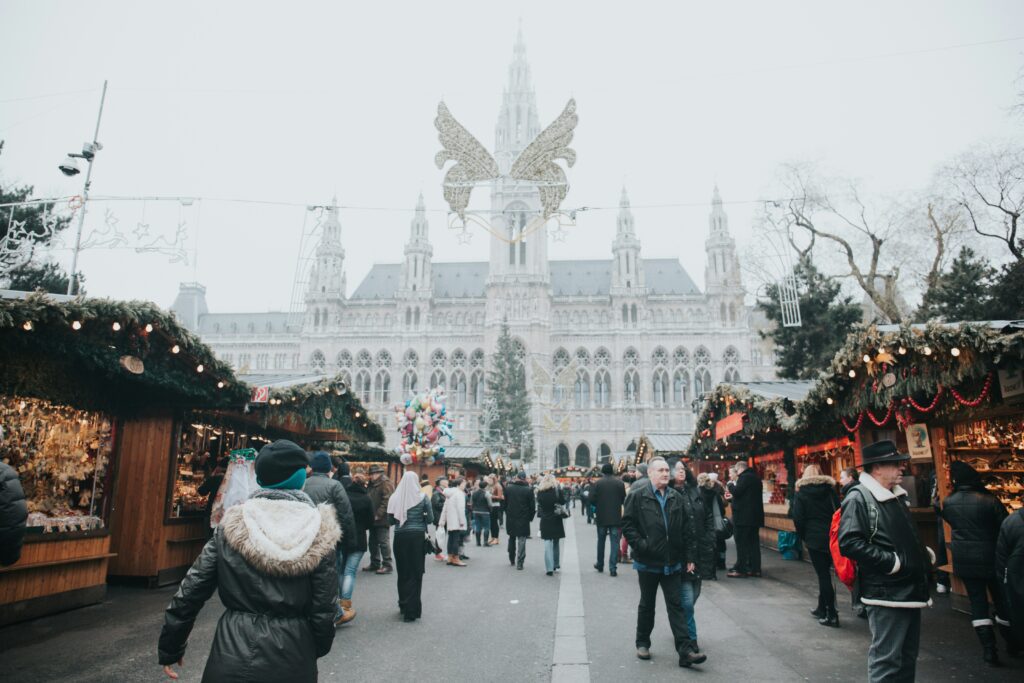
Photo by Alisa Anton on Unsplash
Vienna is home to several Christmas markets, but the most famous is the one held in Rathausplatz, in front of the stunning neo-Gothic City Hall. The atmosphere is regal, reflecting Vienna's imperial history, with wooden stalls selling handcrafted ornaments, warm chestnuts, and Christmas punch. The "Christkindlmarkt" here is known for its holiday concerts and ice-skating rink. Another unique market in Vienna is at Schönbrunn Palace, offering a quieter, more intimate setting with artisanal crafts and classical music performances.
Cologne, Germany
Dates: November 25 – December 23, 2024
Getting There: Fly into Cologne-Bonn Airport or take a train from other major German cities like Berlin, Frankfurt, or Munich.
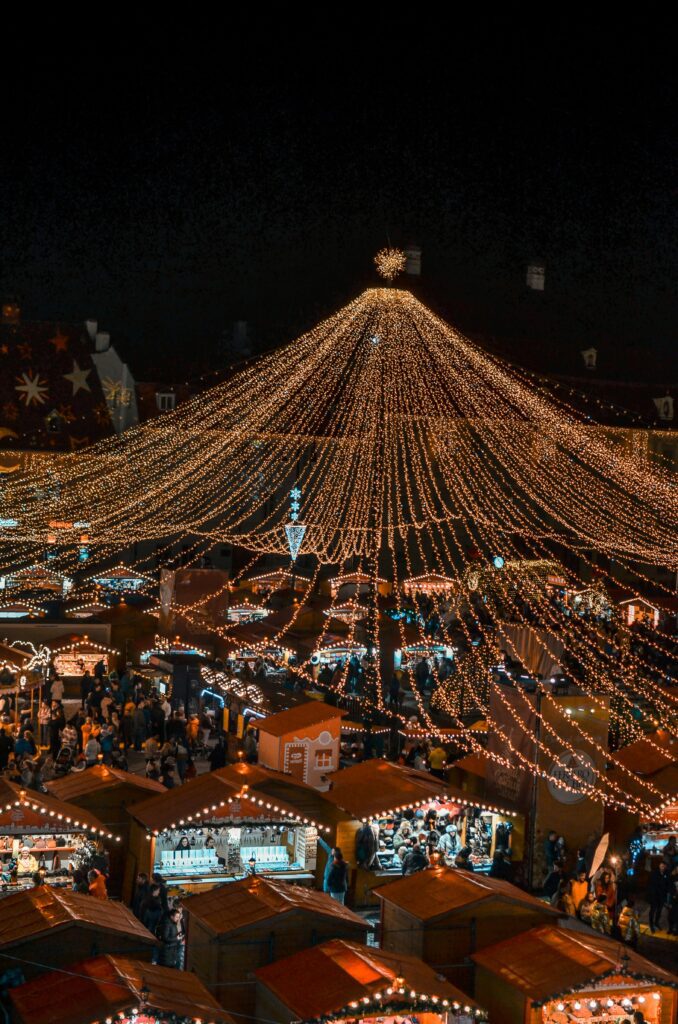
Cologne’s Christmas market is set against the dramatic backdrop of its UNESCO-listed Gothic cathedral, making it one of the most iconic markets in Europe. With over 160 festive stalls, this market offers everything from handcrafted toys to gourmet chocolates. A large ice rink and daily Christmas concerts add to the festive spirit. One of the highlights is the "Starry Sky" canopy of lights, illuminating the entire market. For a more alternative experience, check out Cologne's LGBTQ+-friendly Heavenue Christmas market, located in the Belgian Quarter.
6. Stuttgart, Germany
Dates: November 27 – December 23, 2024
Getting There: Stuttgart is well-connected by both air (Stuttgart Airport) and train, making it easy to reach from other parts of Germany and Europe.
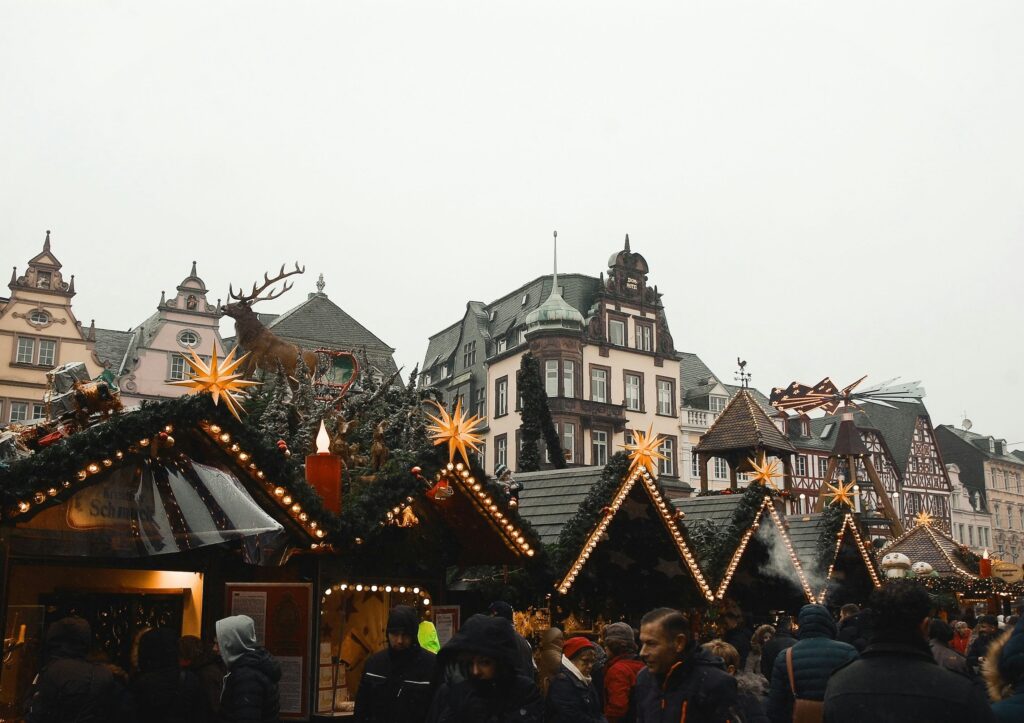
Photo by Diogo Palhais on Unsplash
Stuttgart’s Christmas market is one of the largest in Europe, with nearly 300 festively decorated stalls spread across the city’s squares. The market is renowned for the elaborate decorations on the roofs of the stalls—each one is like a mini Christmas village of its own. In addition to shopping, there are plenty of activities, from carol singing to an ice rink and a children's fairytale world. A bonus is its proximity to Esslingen, a nearby town with a mediaeval-themed Christmas market, where you can experience traditional crafts, sword fights, and period costumes.
7. Hamburg, Germany
Dates: November 25 – December 23, 2024
Getting There: Fly into Hamburg Airport or take a train from Berlin (1.5 hours).
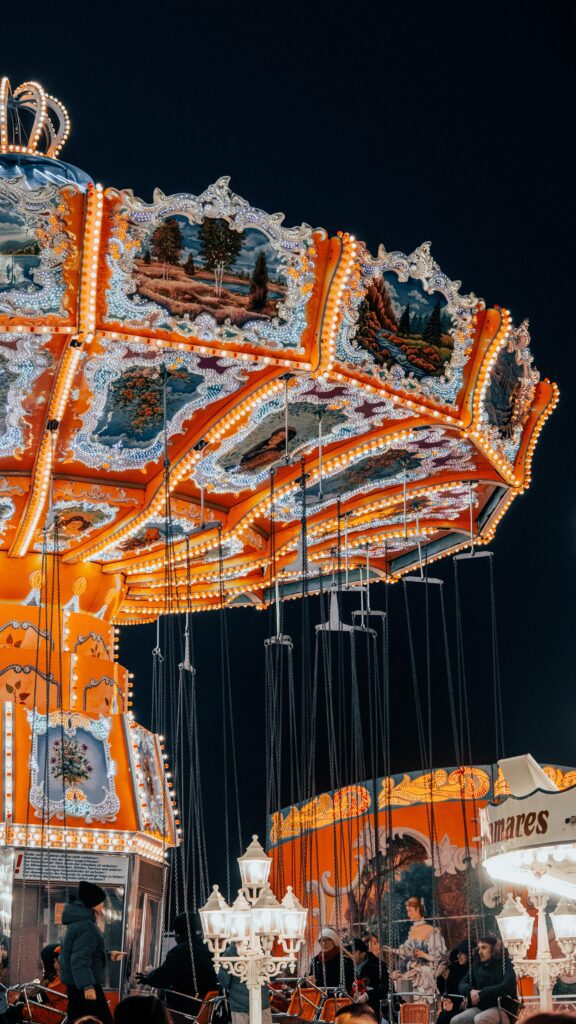
Hamburg’s main Christmas market is located in front of the Rathaus (town hall) and is one of the most traditional in Germany. It features narrow lanes lined with artisan stalls, selling goods such as gingerbread, Christmas ornaments, and wooden toys. A standout feature is the flying Santa Claus, who makes several daily appearances on a sleigh suspended above the market, delighting visitors of all ages. Hamburg also hosts a variety of other Christmas markets, including a maritime-themed market in the HafenCity area and the quirky Santa Pauli market, located in the famous Reeperbahn district, offering a more adult-oriented experience. If you're looking for a unique experience, these European Christmas Markets of Hamburg should definitely be on your list.
8. Salzburg, Austria
Dates: November 21 – December 26, 2024
Getting There: Salzburg is accessible via Salzburg Airport or by train from Munich (1.5 hours).

Salzburg’s Christmas market in Domplatz is quintessentially Austrian, with an intimate setting surrounded by baroque buildings and the Hohensalzburg Fortress towering above. The market focuses on traditional crafts and food. Don’t miss trying the mulled wine and local sausages. The town’s musical heritage adds an extra layer of charm, with choir performances and brass bands serenading visitors as they shop. Another unique market is at Hellbrunn Palace, where a gigantic Advent calendar covers the palace’s façade.
9. Prague, Czech Republic
Dates: November 30, 2024 – January 6, 2025
Getting There: Fly into Václav Havel Airport or take a train from Vienna or Berlin.
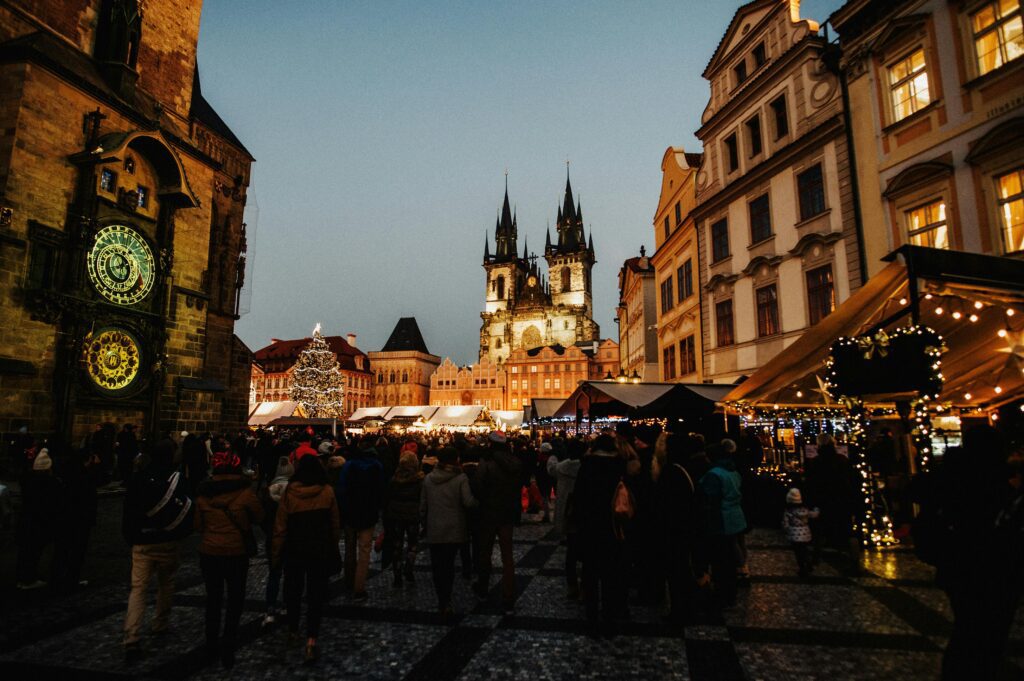
Photo by Helena Jankovičová Kováčová
Prague’s Christmas markets in Old Town Square and Wenceslas Square are among the best European Christmas markets, with stunning Gothic and baroque architecture as the backdrop. The highlight is the massive Christmas tree in the Old Town Square, lit up each evening to the sound of live Christmas carols. Traditional Czech crafts, including hand-blown glass ornaments, are popular items, as are Czech foods like "Trdelník" (a sweet, doughy pastry) and "klobása" (sausages). A Nativity scene and animals for children to pet add to the family-friendly atmosphere.
10. Tallinn, Estonia
Dates: November 22, 2024 – January 7, 2025
Getting There: Fly into Lennart Meri Tallinn Airport, or take a ferry from Helsinki.
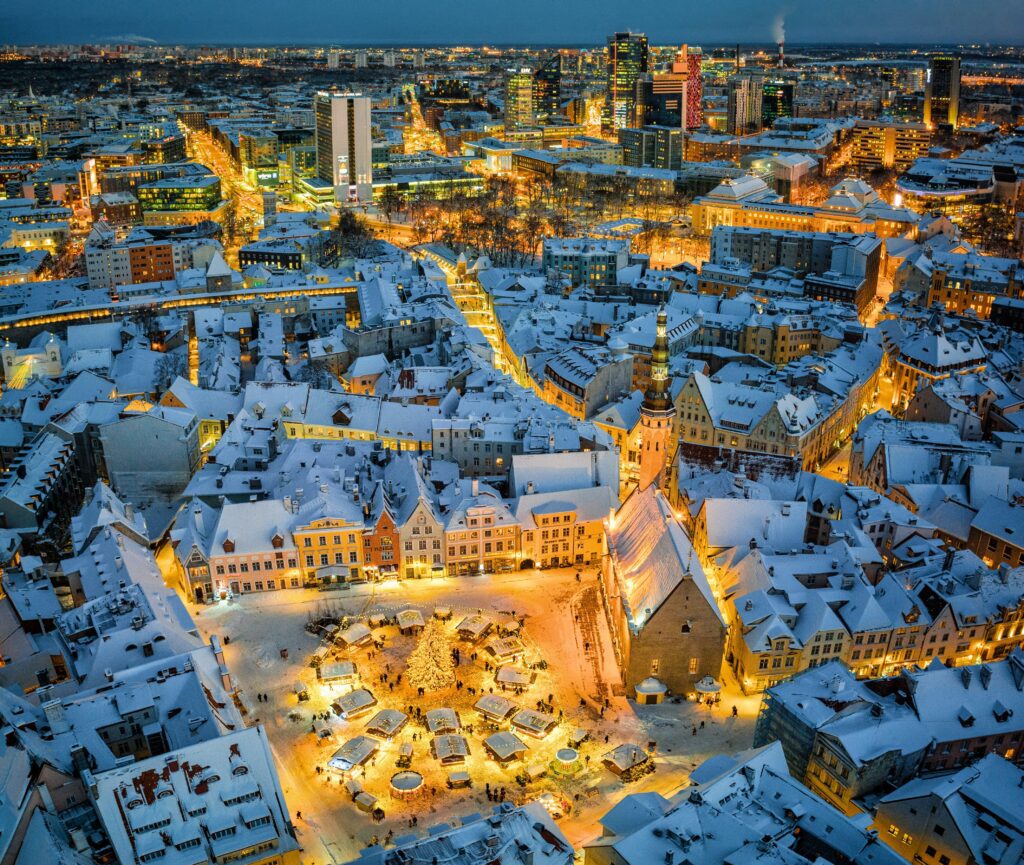
Photo by Dmitry Sumin on Unsplash
Tallinn’s mediaeval Old Town is a UNESCO World Heritage Site, and its Christmas market perfectly matches its historical setting. The centrepiece is a gigantic Christmas tree, a tradition that dates back to 1441, one of the first public Christmas trees in Europe. Tallinn’s market is known for its intimate atmosphere, with wooden huts offering traditional Estonian crafts and delicacies like sauerkraut and black pudding. For a cosy winter experience, sip on hot mulled wine and enjoy the local choirs and dance performances. For those looking for a white Christmas in Europe, Tallinn should definitely be on your bucket list.
11. Basel, Switzerland
Dates: November 23 – December 23, 2024
Getting There: Basel is easily accessible via EuroAirport Basel-Mulhouse-Freiburg or by train from Zurich.
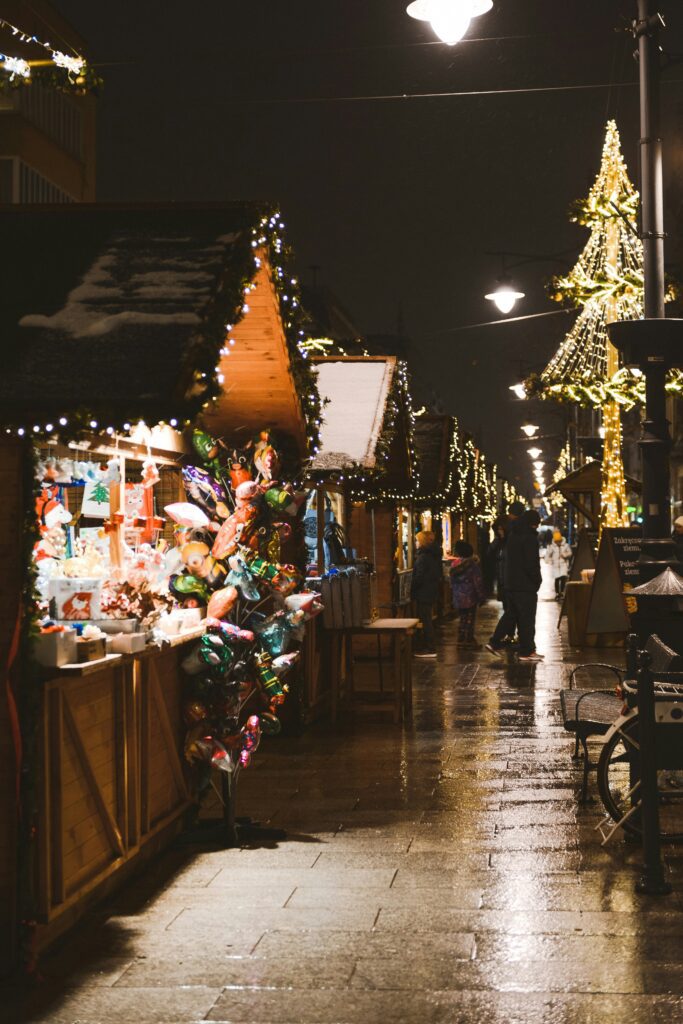
Photo by Alexandra on Unsplash
Basel’s Christmas market is one of the best in Switzerland, known for its high-quality crafts and gourmet offerings. The market is spread across Barfüsserplatz and Münsterplatz, with each square offering something unique. Basel’s rich cultural heritage shines through in its artisanal stalls, and the city’s proximity to the Black Forest means you’ll find plenty of woodcarving and other traditional goods. A highlight is the Advent calendar projected onto the Rathaus, as well as the festive lights adorning the mediaeval streets of the old town.
Read my guide for more information on Christmas in Switzerland here.
12. Merano, Italy
Dates: November 29, 2024 – January 6, 2025
Getting There: Fly into Verona or Innsbruck and take a train or bus to Merano.
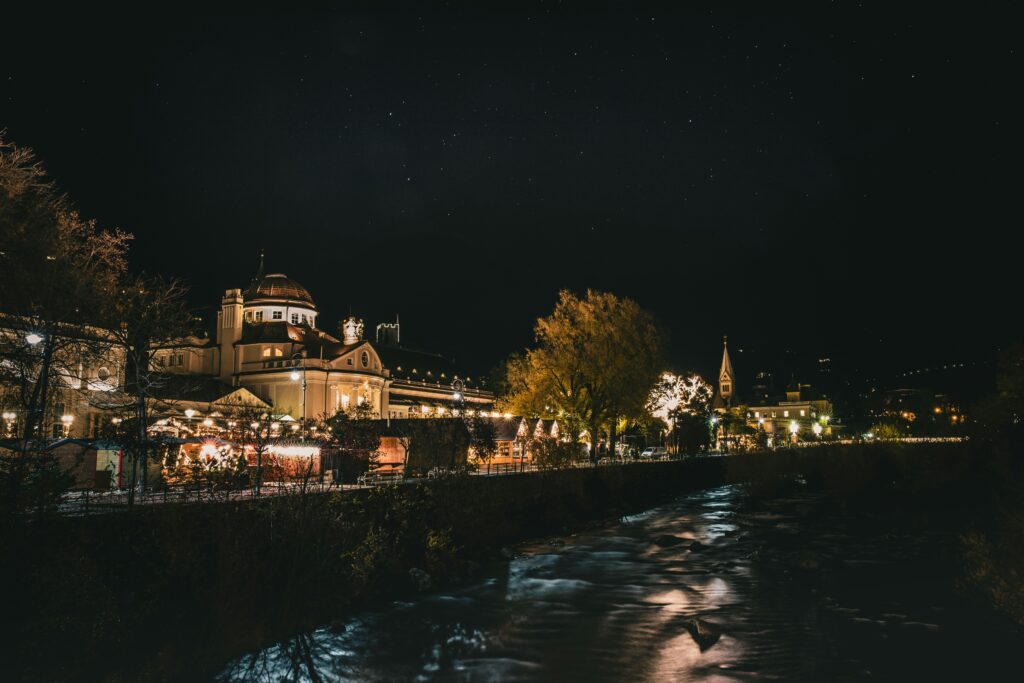
Photo by Alessio Zaccaria on Unsplash
Nestled in the Italian Alps, Merano’s Christmas market offers a unique blend of Italian and Tyrolean traditions. The market is known for its wellness focus, with thermal baths and spa treatments available for visitors who want to relax after a day of shopping. The stalls here focus on local artisanal goods, such as woollen clothing and handmade candles, while the food includes Italian delicacies like roasted chestnuts and Alpine cheese. The snowy mountain backdrop adds to the serene, festive atmosphere. Merano has one of the most unique European Christmas market as it is set on the banks of the river, with some traditional thermal baths right around the corner.
Learn more about Christmas in the Dolomites here.
13. Innsbruck, Austria
Dates: November 15, 2024 – January 6, 2025
Getting There: Fly into Innsbruck Airport or take a train from Munich (2 hours).
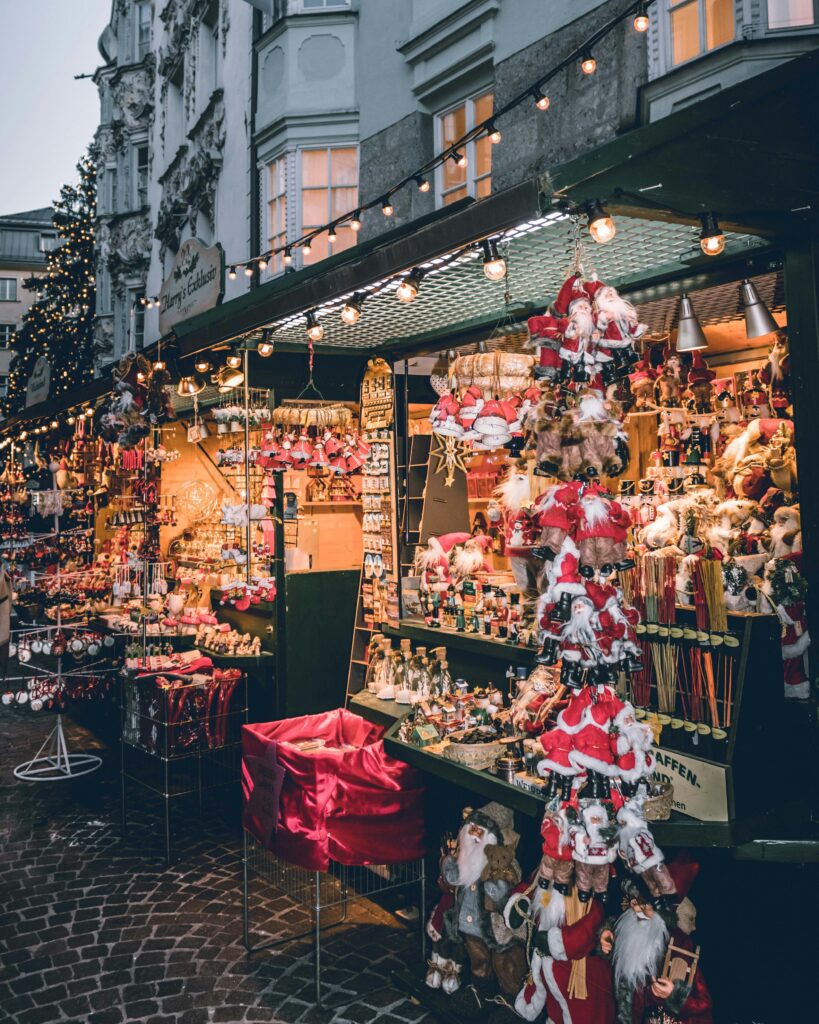
Photo by Michelangelo Azzariti on Unsplash
Innsbruck’s Christmas market is in the heart of the Alps, along with its unique setting makes it stand out as one of the best Christmas Markets in Europe. The mediaeval old town, with the famous Golden Roof as a backdrop, hosts numerous stalls selling traditional crafts and holiday treats. In addition to the main market, the Hungerburg Christmas market offers a panoramic view of the snow-covered mountains. Innsbruck is perfect for combining Christmas shopping with outdoor activities like skiing or snowshoeing, making it a great choice for active travellers.
14. Budapest, Hungary
Dates: November 29, 2024 – January 1, 2025
Getting There: Fly into Budapest Ferenc Liszt International Airport or by train from Vienna or Prague.
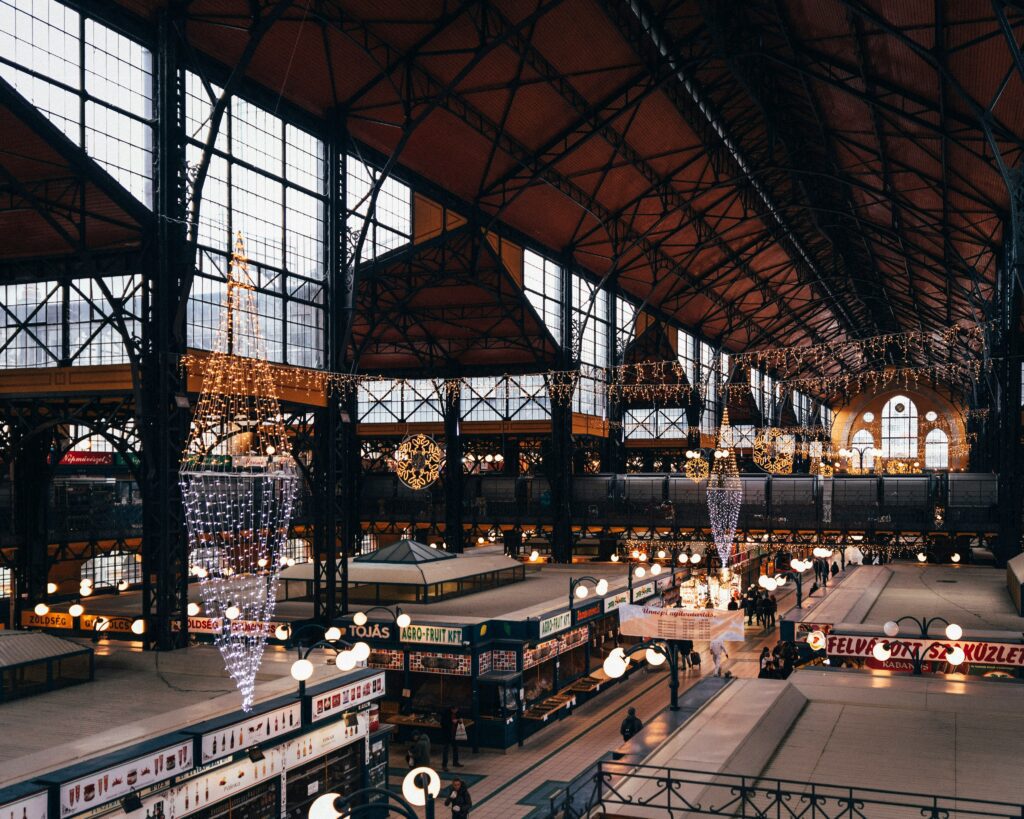
Photo by Krisztian Tabori on Unsplash
Budapest’s Christmas markets, located in Vörösmarty Square and in front of St. Stephen’s Basilica, are known for their charming, festive ambience. Traditional Hungarian crafts, like ceramics and embroidered textiles, make for unique gifts, while food stalls serve up hearty local dishes like goulash, "chimney cake," and mulled wine. The light show projected onto St. Stephen’s Basilica is a highlight, as is the ice-skating rink that winds around the square. The combination of stunning architecture and rich Hungarian culinary traditions makes Budapest one of the must-visit European Christmas Markets.
15. Gothenburg, Sweden
Dates: November 15 – December 31, 2024
Getting There: Fly into Gothenburg Landvetter Airport or take a train from Copenhagen (3.5 hours) or Stockholm (3 hours).
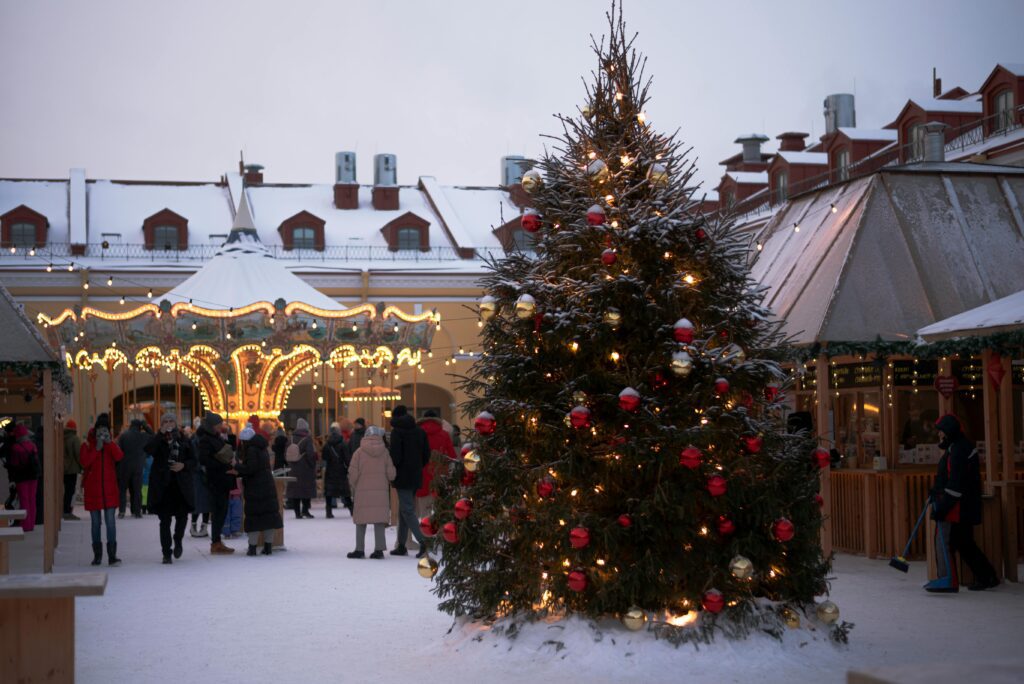
Liseberg Amusement Park in Gothenburg hosts Sweden’s largest Christmas market, which combines festive shopping with thrilling rides. The entire park is transformed into a winter wonderland, with over five million lights decorating the trees and buildings. There are numerous stalls selling Swedish crafts, such as hand-knitted mittens and woodwork, along with traditional foods like pepparkakor (gingerbread cookies) and glögg (Swedish mulled wine). For families, the highlight is meeting Santa Claus and exploring the Ice Gallery and ice-skating rink. This market offers a magical Scandinavian twist to the European Christmas market scene.
What to Pack for a Christmas Market Trip
When visiting European Christmas markets, it’s important to pack wisely to ensure you’re comfortable and prepared for all weather conditions. Here’s a list of essentials to help you stay warm and enjoy your trip:
- Warm Layers: Temperatures in Europe can dip below freezing, so pack thermal innerwear, a thick sweater (preferably wool or fleece), and a warm, insulated coat. Down jackets are great for keeping warm without too much bulk.
- Comfortable, waterproof footwear: You’ll be doing a lot of walking, often on cobblestone streets or through snow, so bring comfortable shoes or boots with good support. Make sure they’re waterproof to keep your feet dry in case of rain or snow.
- Accessories: Don’t forget warm accessories like a scarf, hat, and gloves. A lined beanie and touch-screen compatible gloves are ideal for staying warm while using your phone to snap photos of the festive lights.
- A Sturdy, Reusable Bag: Many Christmas markets encourage sustainable practices and may not provide plastic bags. Bring a reusable shopping bag or backpack for your purchases.
- Portable Charger: You’ll likely be using your phone for photos, navigation, and translation apps, so pack a portable charger to ensure you don’t run out of battery.
- Hand Warmers: These small, inexpensive items can be a lifesaver in freezing temperatures. Slip them into your gloves or pockets for added warmth.
- Travel Adapter: Europe has a mix of plug types, so bring a universal travel adapter to charge your devices in different countries.
- Snacks & Water: While there’s plenty of food at the markets, it’s always good to have a few snacks and a water bottle on hand, especially if you’re travelling long distances between destinations.